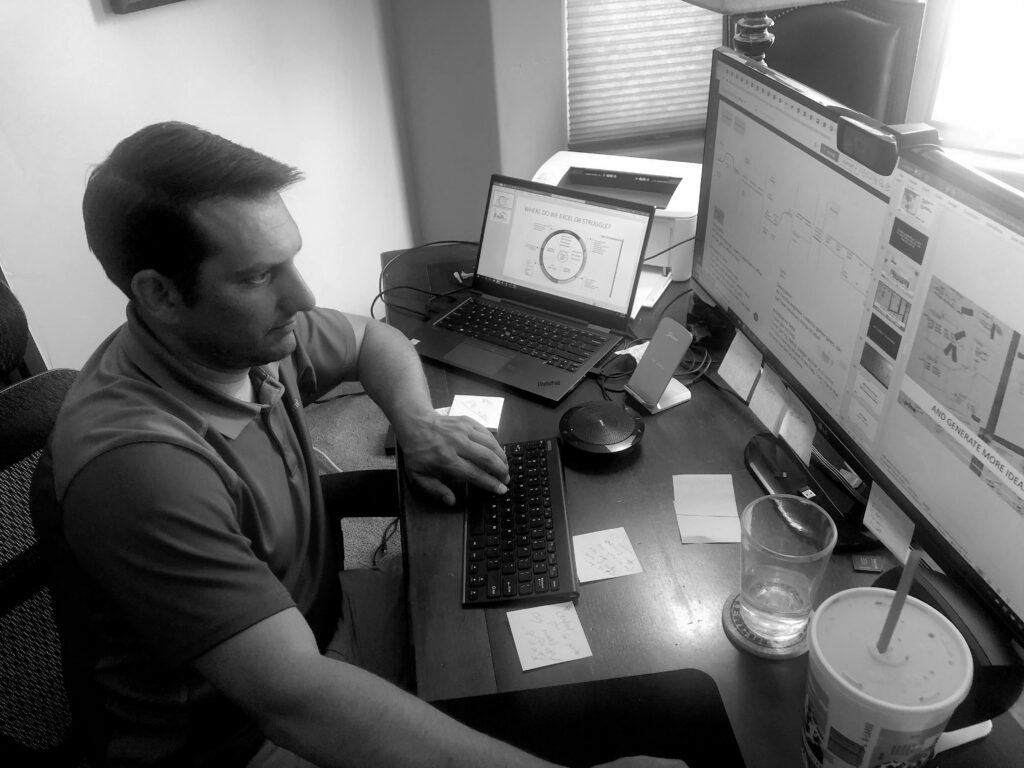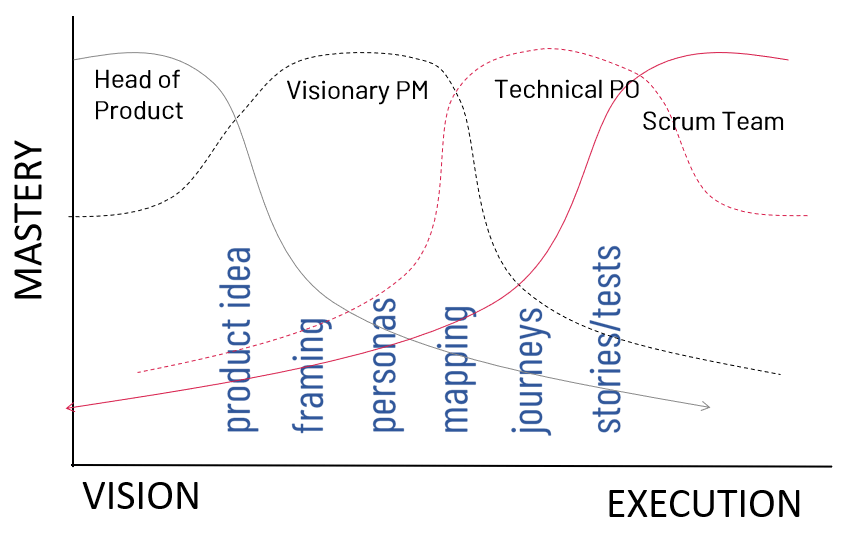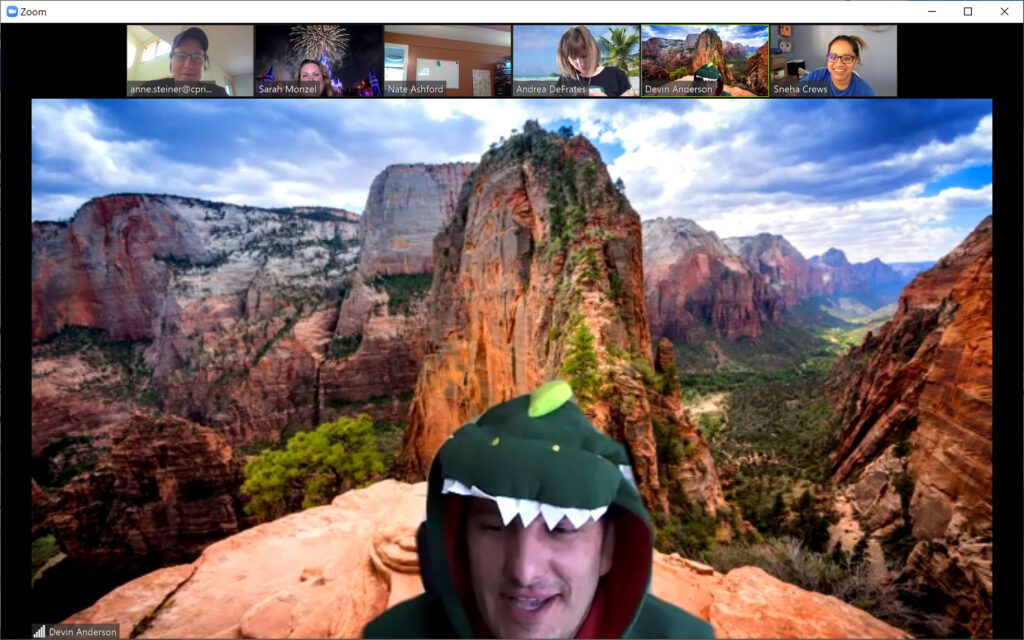A “Day in the Life” of a Product Manager
Over the last 15 years, I can count 5 days that I looked at the time and thought, “man, this day is going slow” (and yes, I keep track). It’s both a good thing and a curse. It’s good because if you are looking for boring days where you are trying to find out what to do next, stop reading because PM is not that. In fact, it is fast-paced, exciting, and downright rewarding. However, some might say, you must be a special creature to do it. You must embrace the ambiguity and iterative improvements rather than perfection and focus.
The days are filled with context switching from strategic to tactical and right brained to left brained. Get ready for the mental exercise of a “day in the life” of a Product Manager.
7:00 AM.
The alarm goes off, and you’re exhausted because you were on a call with Beijing until midnight. You carefully calculate how you can squeeze 15 minutes out of your morning routine and hit snooze. Unfortunately, the stress of worrying if you will wake up in time keeps you from falling back asleep. Ultimately, you fight your tiredness, roll over, and pick up your phone. Every morning you promise yourself you’re not going to look at your phone before getting ready, but here you are again. Yet another email from the head of sales asking about status on a product enhancement that a prospect is requiring before signing the purchase agreement. It just happens that this big deal is the key difference between sales making their bookings goal for the quarter (and them going to club) or not. It isn’t an easy response. You mark it unread to make sure you will see it later.
8:00 AMArriving at work, you realize that you have over 50 emails, and the day hasn’t even started. You remember back to when you weren’t a global company and only had to worry about North America. Why did you push so hard to go global? But, there is no regret as you have doubled revenue in the last three years. You review your meetings for the day and realize that you are double or triple booked and start to plan your day based on meetings that require your attendance versus those that are informative. You are grateful that the company shifted to having product managers and product owners and realized that several of the meetings have both of you in attendance. A quick discussion with your product owners results in a good coverage of the meetings. In preparation, you answer a few of the product owner’s questions in hopes and that you’re on the same page. Why did you fight so hard for so long against creating product owners?

It’s time to get back to the head of sales. A quick look in Jira isn’t answering the question to your satisfaction. You know the team has been working on it for a couple of weeks and so you reach out to the product owner and development manager. Unfortunately, it looks like they got hijacked by a product issue and stopped working on the enhancement a week ago. After going over the defect in exhausting detail, your brain hurts from trying to remember the architecture and technical aspects of the product. It’s hard to believe it’s only been a year since instituting product owners, and you’re starting to lose touch with the technical side. The team promised to get back to working on the enhancement tomorrow, and they estimate they should be able to deliver the last week of the quarter. You start evaluating the risk based on the current date with regards to revenue recognition. You start to draft an email response to the head of sales, but notice you are late to a meeting. Time to multi-task.
9:00 AMTime for the bi-weekly meeting with marketing to review the campaign schedule and events. Good, they’ve started with the other product lines, and I think, “I can get this email out quick.” Just as you hit send, you realize the last question was directed at you. Luckily, you’ve been in this meeting enough that you know the question without hearing it. “Yes, we are on track for delivering in time for the RSA conference.” The meeting continues with a lot of creative brainstorming on other ways that we can drive more thought awareness and have a positive impact on the current pipeline. Meanwhile in the back of your head, all you can think about is how your current retention numbers aren’t where you’re wanting them to be and how fragile the code must be to see the number of defect escapes as of the latest release.
10:00 AMShoot, it looks like the customer wants a signed commitment for the enhancement and that it will be delivered this quarter. They also want a special call today to make sure everyone is on the same page. Could this be an effort to push back on pricing? It’s always a risk but being a team player, you agree to the meeting and cc: the product owner and the dev manager so that they feel the same level of pressure.
Knowing that it’s been a long haul and the teams could use a bit of motivation, you realize it is time to make some deposits in the social collateral banks of the teams. You pull some bags of chocolates you have stored in your desk drawer that are probably left over from the corporate Halloween party. You start to walk the halls and visit with the teams. Carefully you select the customer stories to share and emphasize how much the customers love the product and how we are delivering value to the market. You balance it with stressing the urgency of delivery to beat the competition. There is something about chocolate that breaks down barriers, but these seem a little stale.
11:00 AMThe head of analyst relations for your company has scheduled an hour-long call with your favorite analyst from your favorite firm. The head of analyst relations kicks off the call, and you get a short little time to reacquaint with the analyst. She thanks you for the company shirt and shoots you a picture of her wearing it while on a bike ride. It’s the same shirt you now use when you paint or work around the yard.
Then a little surprise from the head of analysts relations (AR): he volunteers that you would like to show a demo of the upcoming release. While scrambling to bring up a demo, you regurgitate the value statements and the problems that you’re trying to solve in the upcoming release. You start to share customer stories and who is excited about the upcoming features. You delay just long enough for the instance to spin up, and the demo goes flawlessly. You’re so grateful that the product owner sent you a link just yesterday to look at.
Your strategy with the analyst is paying off. By including her in the process she feels like this release is her baby too.
12:00 PMAnother lunch meeting, this time to discuss the product demos for the upcoming user conference in Vegas. This will be your 5th conference in Vegas this year. No surprises, it’s the typical sandwich meeting. Unfortunately, your go-to sandwiches are gone. Who chooses roast beef anyways? It will have to do.
As you walk through the proposed demo, it doesn’t meet the showmanship bar for the stage. No cannons going off, no Vegas show girls dancing, and no jokes that bring attention to the CMO. While you wish it had a lot more pizzazz, you know that the customers are super excited with all the time savings they’re going to get. You agree to go back to the drawing board and figure out how to incorporate a cannon. Maybe a customer can be shot out of a cannon holding a number 10. “That would surely do it,” you laugh.
1:00 PMIt’s time to review the current metrics with the business unit. While improved, the customer acquisition cost is still too high based on similar products and out of wack with LTV. Customer retention is improving but still far below the number required to deliver the growth expected. Man, that 15% growth seems out of reach. Customer satisfaction remains high and you talk with the sales representative of how to use that in the sales strategy. The high NPS is mostly attributed to the responsive and effective support team, but you know it is also because of the continued investment in customer facing features that solve real problems. Unfortunately, some new strategic initiatives mean that 30% of the developers will be rolling off your products onto another product-line. How do I do both retain customers and go after new markets with fewer resources?
The retention rate is being impacted by the new startup that is disrupting the market with a focused, low-cost, simple-to-use, alternative for small business. While not nearly as featured, it is taking away customers. You keep justifying that it is ok because they are in the high acquisition cost segment, and your sales team is more focused on “big fish” now.
2:00 PMIn this week’s Product and Development Leadership meeting, the topic comes back to not having enough backlog ready or enough detail in the stories. There continues to be a mismatch between what is expected. Why does it feel like I need to document so much detail? This was the reason why we created product owners in the first place, but it seems like it will never be enough. After going back and forth on what a good backlog looks like, it is clear that we need to engage with development earlier in the process to help them better understand the “why?” in hopes they won’t have to come back to us for so many little details. You do everything you can to avoid agreeing to yet another new process. The CTO and the head of product both agree they need to hold weekly meetings to review the status of the roadmap. The only available time without meetings is noon. There goes another lunch. I remember when free lunch was something I looked forward to, barely.
You join the call for the customer to review the enhancement request. Sales starts out the call with a good description of the requested solution. You shift the discussion to make sure you understand the problem. Before diving into the proposed solution deeper you decide to share with them the current roadmap plan. After 20 minutes of sharing really insightful questions, the customer relays that the items on the roadmap are a higher priority than the enhancement they are demanding. You cheer in celebration on the inside. Little do you know Sales is not excited because they were leveraging this big customer to get the enhancement for a couple of small customers as well. They know the small customers aren’t enough to justify it.
The customer agrees to being a reference account and to joining you onstage at the user conference for the demo. You will break the news of the cannons to them later, so you don’t scare them off. 🙂
4:00 PMYou look at your watch and realize the day is quickly coming to an end, and you haven’t been able to work on any of the strategic items in preparation for the next release. You quickly take some time to review a rough draft of analyst reports, some marketing collateral, and the current website proposals. The analyst report has an error in it. You quickly shoot off an email to your head of AR to try and follow up with and get it changed before it goes live. The collateral and the website have the correct messaging, but you don’t trust yourself on the design feedback. You grab a peer that is stronger on the look and feel side of things. (Maybe that is why they get all the new product ideas.) They give some feedback but you know it is based on personal bias.
It looks like the deposits into the social collateral bank are paying off with the developers. The husband of one of the developers dropped off a plate of fresh cookies, and she brought one up to share it with you. #winning Then, she makes some comment about them being better than stale chocolate. You grin in agreement.
5:00 PMIt’s time to work on that deck that you’ll be delivering in the webinar next week. Who’s kidding who? You haven’t even thought about it until today. You squeezed by with some high-level bullets to get all of the collateral and social media invites created. Now comes the real work; how do you make it engaging and valuable without sounding too product-y or sales-y? You’re interrupted by the product owners coming in and sharing with you the stresses of the day and then asking for your perspective. It is a welcome distraction, and you’re reminded of how much you love this job as you help solve problems. It is great to be surrounded by people that are super smart and want to solve problems. It reminds you of your days when you were closer to the developers and how fun it was to have that focus.

You pack up and take your laptop with you, heading out for home. The day was only moderately stressful, so you take the short drive home knowing you won’t need the time to regroup before seeing the family. You get home, kiss the wife, hug the kids, and try not to be distracted by the phone. After 15 years, you’ve learned that you must disconnect to get out of the fight or flight of the job. It is critical for creative strategic thinking.
With all the travel lately, you opt for cereal rather than a heavy meal.
8:00 PMYou say good night to the kids. You are still suffering from jet lag due to the trip to Europe last week and want to call it a night. However, last night you weren’t able to complete all the items needed on your call with the China PO’s and development team. This time you figure you’ll take the call from the hot tub. You justify not feeling bad because of all of the personal sacrifices and missed kids events while traveling. The call goes particularly well and shows that your trip to China last month provided clarity and built some relationships with the team (even if you fell for a teahouse scam and ate a vendor scorpion while touring Tiananmen Square.) While off mute, you’re surprised when one of the team members asks what the noises are in the background. In fear they heard the water, you sheepishly admit you’re sitting in the hot tub, and then realize they were talking about the crickets. Oops! The call ends your day while beginning theirs. You know you will wake up to another set of questions in your inbox, but you promise yourself not to look at them first thing, again.
8:30 PMThe call is over. You quickly look through your email to see if there are any urgent or important emails you’ve missed and answer a few of them. You put your phone down. The day is over. You promise yourself that tomorrow you’ll make more time for yourself and work in some exercise.
While not every day looks like this, the role of a product manager is one of the most stressful and difficult positions in a company. I want to share a few things that became top of mind as I captured some of the above experiences.
- Influencing is easiest when others are part of the decision
- Don’t be so quick to change the plan – make sure they know the trade-offs
- Prioritize downtime for yourself
- Prioritize downtime for the benefit of your employer
- Make regular sincere deposits in the social bank
Much like including a research analyst early in the definition of a product can result in them feeling like it is their creation, including your development teams and other teams early in the discovery phase builds unity in purpose and collective ownership. I love how it turns a great team into an awesome, highly effective team. Using a proven, collaborative product discovery and delivery process that involves the team not only in the delivery, but discovery as well, results in not only a higher quality product, but more importantly achieves product market fit.
One of the worst side effects of agile is when we are agile to prove we are agile. We can get too reactive and too eager to pivot. We find ourselves reprioritizing to make the sale. Hopefully, we all remind ourselves often that as product managers we represent the market, not just our customers and especially not the prospect of the quarter. We find ourselves stuck between representing the market and trying to show we are agile when customer requests come in. Often we are quick with the word “no.” But there is a better way than just saying no.
One technique that has been the most valuable through the years is making sure you can talk to the requester directly to hear what they need. Then before jumping to answer yes or no, share with them what the current plan is and why. I can’t count how many times that after sharing the current roadmap developed from countless interaction and research resulted in the customer saying, “I didn’t even think of that; that is much more important than our request.” Too many times, we think that everyone else knows the trade-offs. This holds true inside the company too. Take the opportunity to influence and share the strategy.
Stay motivated, enthusiastic, and dedicated by prioritizing time for yourself. I know it seems counter to dedication, but we are wrong. It is imperative to dedication that we step away. Don’t look at your phone first thing in the morning. Put the laptop down earlier at night. Be present with those around you. Prioritize time during the week to tear away and get your favorite treat, grab a bike ride, or a walk through the park. Why are we so quick to work an evening to answer emails or write a blog, but reluctant to take a 30 minute break in the middle of the day? Shoot, how many times do we give up our lunch time to accommodate something that could have waited until tomorrow or next week?
Be careful when deciding between the big events. Through the years, I have realized that some of the biggest misjudgements I have made have been when making a self-sacrifice that I shouldn’t have. Missing a child’s major event to attend a conference or leaving your wife and kids at Legoland in the middle of a vacation to drive 12 hours home and back for a two hour presentation. I will never forgive myself for missing my huge Lego fans experience Legoland park for the first time.
Sure, we make sacrifices continually. I’m talking about the big ones that we will always remember and regret. Chances are that the more we regret those decisions, the more we will find ourselves becoming bitter of those choices when things at work aren’t going our way. Keep things in balance for yourself and it will make you a more pleasant person to work with too. Plus, no one remembers you make those big sacrifices except you. Don’t hold them accountable for it.
We spend so much of our waking hours, as product managers, actively thinking and preoccupied with work. This overactivity doesn’t allow our brains the time to subconsciously solve the complexities we face everyday. You’ve heard how our brains solve problems while we sleep. So why do we starve ourselves this time? In addition to sleeping hours, how many times have solutions flowed to us in the quietness of a routine such as a walk, working in the yard, or even taking a shower? These moments where you can step out of the fight or flight of the day and into the quiet meadows of thought allow us to see things from a different perspective. It allows us to see things in the whole. It allows us to prioritize that which matters most and as product managers there is plenty of need to prioritize. But you can’t provide this value if you have your nose in your phone or your laptop. Disconnect!
We have all had managers that we would do anything for, and unfortunately, we’ve also had those managers that demand allegiance. What was the difference in how engaged you were? I’m not talking in the short term; I mean that long haul engaged.
Unfortunately, the title Product Manager can be a bit misleading. While we have responsibility for the success of the product, very few actually report to a product manager. This means that we manage through influence. We can be inspiring and have the most compelling story supported by data and still look behind us and see that no one is truly following us into battle. That is because, like it or not, as a product manager it is important that people actually like to work with you and that they trust you.

Think back to what made that great leader unique and mimic it even though the people you influence don’t “report” to you. One of the most important principles I have learned is to make regular deposits into the social bank. Making sure to care about those around you and know about what motivates an individual and what matters. This is dependent on getting to know them on a more personal level. Making these deposits through interactions and kind acts affords us the rare opportunity when we have to make a withdrawal; that time when we need that extra push, or when we don’t see eye to eye but need to move forward and commit. One word of caution, it needs to be sincere. Insincerity will be discovered over time and will actually be more ruinous and detrimental than just being real. If you find yourself trying to justify your behavior behind the principle of “Radical Candor” maybe you should check yourself.
You have one of the most stressful and difficult positions in a company. Because of this, it is critical that we prioritize some downtime to rejuvenate, take a breath, share why things matter, and not be quick to change the plan. Influence through collaboration and inclusion, and continually invest in the relationships of those around us. Are there other topics you would like to explore? Let me know.


